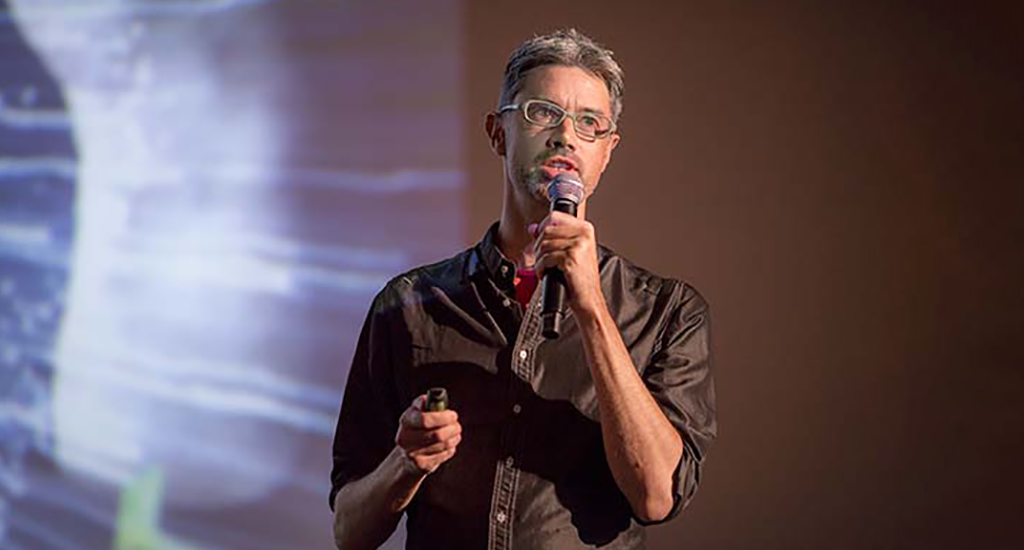- 13 July 2021
- Posted by: Canberra Innovation Network
- Categories: Coworking, Feature, Innovation Connect Grant

Crippling pain is one of the few things we’d not wish upon our worst enemies – it can be completely debilitating, thoroughly isolating and altogether maddening, as most GPs have no idea how to treat it. And in the absence of physical therapy as a treatment option, an Rx is often the answer given.
That’s not the best solution for many who suffer from chronic pain, as our coworker Hal Greenham can share. It was his own journey from “ow” to “wow” that led to the creation of his innovative business, Freedom From Chronic Pain.
We had a quick chat with him about his path from pain to productivity, and startup prosperity.
CBRIN: Hal, what sort of aches are the ones we need to pay attention to before they lay us flat out?
HAL: Well, I had plenty of simple strains and muscle pains which seemed to go away of their own accord. But then what started as occasional wrist pain morphed into a mysterious chronic pain syndrome which left me effectively incapacitated. I was a walking bundle of muscle and joint strains and sprains which wouldn’t heal. Whenever I moved or did the most basic activities I experienced significant pain in my wrists, shoulders, neck, lower back, thighs, ankles and feet.
The vibrant, creative person I’d been throughout my mid twenties felt like someone I didn’t know. I found myself unable to walk further than 25 metres at a time, to go down stairs, or perform many of the basic activities of daily living without significant pain and fatigue. I couldn’t sleep properly. I felt scared of the unknown, of this mystery illness that had befallen me.
CBRIN: That sounds awful, Hal. Who did you talk to about it, and what did you do?
HAL: The pain was particularly bad after typing or playing my bass guitar, and it just wasn’t going away – I was doing long hours of dextrous activity with my hands in a cold Melbourne winter, so I went to see my trusted, long term GP, who asked me “Can you rest?” I explained I’d become essential to the functioning of my small business and my two original bands, and it would be a bad time for me to change any activities. He gave me some anti-inflammatories, but they didn’t change the pain I felt each day.
A friend recommended a highly experienced physiotherapist in Brighton who gave me a soothing massage, whilst proudly telling me about famous clients who benefited from massage and strenghtening exercises. Too bad neither worked for me. I’d always had an interest in holistic approaches to health, so I saw a well recommended local acupuncturist for 6 sessions, which seemed to make a difference at first, but without any lasting benefit.
I began to get quite anxious at this stage. I was still taking the anti-inflammatories the doctor gave me, and resting as much as possible. But the realities of life made it hard … I had a business to run and no one was going to pay me if I didn’t finish work for my clients.
CBRIN: So what does one do at rock bottom?
HAL: One Googles! I started searching for connections between emotions and pain syndromes. I found the work of US rehabilitation specialist Dr John Sarno and ordered his book (The Mind/Body Prescription) and devoured it. His theory was that stress and unconscious emotions lie at the root of chronic pain and fatigue.
My anxiety dropped away even though my body was still in a state. Reading Sarno was like applying a divinely anionted intellectual balm for the soul. He laid out, in lucid detail, his account of the genesis of chronic pain and fatigue syndromes and with every chapter my excitement grew. Unconscious emotions were the missing link … the thing none of my valiant 42 practitioners of healing had been able to help me grasp or even point to.
Sarno was adamant that the chronic pain was not stemming from my injured tissues; rather, he argued tissues heal within days or weeks, and ongoing pain is a response mediated by the Autonomic Nervous System as part of a whole-mind-body attempt to manage what’s below the surface of consciousness.
From here on, a virtuous cycle ensued in which less fear of the pain led to less pain, which increased my confidence in the mind-body approach and led to less fear of the pain that remained. It showed me in no uncertain terms how important the role of fear and anxiety are in the perpetuation of pain.
CBRIN: So it was as easy as reading the right book? Lemme renew my Prime membership right now…
HAL: No, bud. I had to work consistently at identifying and letting myself feel the emotions which were blocked, but it felt that as I did, each little release led to my body and mind feeling a bit lighter. Given the physical relief which ensued as a result (i.e. reduced pain) I experienced this as an exciting journey of discovery rather than a scary process.
And the rest, as they say, is history. These days I consider myself thoroughly cured of RSI / chronic pain / CFS. I still get the occasional twinge of pain which goes away rapidly when I apply my now well-practiced mind-body approach to eliminating any symptoms. And when I’m typing frantically to get something finished, or playing the drums loudly, or digging in the garden without pain, I often experience a sense of amazement and disbelief at how much my life has changed.
I started a site to help folks in Melbourne 12 years ago, and eventually Freedom From Chronic Pain was born; we (it isn’t just me anymore) trained about 120 practitioners, have seen about a thousand clients, and are now working on the next gen of the platform, which the CBRIN Growth Team helped us conceive and ideate.
CBRIN: Amazing. We’ll take two of those and call you in the morning?
HAL: It takes more than that, friend, but yes! I love that CBRIN’s helping me bring the message to the people, and a cure for many.
CBRIN: Rock on, Hal. Rock ON 🙂

